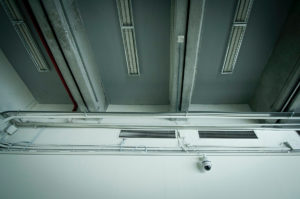ADT College Station, Texas
Crime in College Station, Texas
College Station, centrally located within the Brazos Valley, is home to Texas A&M University. It derives its name from the university’s establishment along a major railroad line in. This renowned institution also helps to account for its constantly growing population, and its high level of education among adult residents. In 2006 it was named by Money magazine as the state’s most educated city, and ranks 11 on its list of most educated cities nationwide. Along with its neighboring city of Bryan, College Station accounts for half of the Bryan-College Station metropolitan area, which is the 15th largest in Texas. Thanks in part to funding from such renowned institutions as NASA, the National Science Foundation, the National Institutes of Health, and the Office of Naval Research, A&M has become known as quite a prestigious institution. The university system itself employs well over 16,000 people. The city gained even more national prestige in 1990 with the foundation of the George Bush Presidential Library. Despite a higher than average percentage of the adult population holding bachelor’s degrees or higher, College Station’s median income is just above $21,000 annually. This is noticeably lower than both Texas’s state average of $26,513 and the country’s national average of $28,555. It would be easy to become discouraged looking at numbers like this, but it’s important to note some of the contributing factors. The median age of residents is only 22.6 years old, which can primarily be attributed to the city’s influx of college students. Almost 33% of the population falls between the ages of 20 and 24. This helps to account for inexplicably low per capita income levels, as most college students are not employed at full-time jobs. It’s also interesting to note that the median household income for the city has increased by 57.86% since the year 2000.
This is significantly higher than the national average, and bodes well for the future of College Station’s residents. The constant influx of new residents has prompted construction of more rental units from 2000 to 2010 than in any previous decade. The city’s steady population growth does not show any signs of stopping any time soon. As smaller cities like this one steadily progress toward becoming major metropolitan areas, current residents and future transplants can expect both associated advantages and disadvantages of major city life to increase. Typically more jobs are available in major cities, and there are more opportunities for recreation. Cultural diversity and the arts often follow in the footsteps of industry and education as well. However, one down side of major cities is that they also come with higher crime rates. Currently College Station is neither a particularly safe nor a particularly dangerous place to live.
Rates of violent crime are well below national and state averages for other communities of its size. Property crimes, including burglary, theft, arson, and other forms of home invasion or destruction, are currently hovering right around average. One in 38 residents fall victim to property crimes within city limits, compared to one in 33 in Texas overall.

Thus far, crime rates in general have yet to see a spike, partially thanks to the city’s 132 police officers. Just this week ten new officers were sworn into service. One criminal element that is, unfortunately, beginning to rise is that associated with hate crimes. No hate crimes at all were reported in College Station in the past decade until 2014. Since then, and particularly in recent months, incident rates have been increasing. In July of 2016, someone fired several shots into the entryway of a local Islamic community center. The mosque was located just two blocks away from the Texas A&M campus, in what is typically a safe area. Thankfully, although there were both adults and children present in the building at the time, damage was confined to broken windows and bullet holes. No one was hurt. In February a less violent expression of hate took place on the campus itself, where a group of white Texas A&M students harassed a visiting group of black high school juniors, yelling racial slurs and telling them to “go back where they came from.” It’s clear that some of the students being drawn to College Station for an education are bringing more than just a desire to learn to the table. For long-time and newer residents alike who are understandably afraid, and outraged, by these kind of increasingly frequent events, it’s important to keep in mind that the majority of students and the city’s population in general does not condone racism. The number of protesters who showed up to a recent event held on campus by the “Alt-Right” movement speaks to the fact that most people do not agree with bigotry and violence. It is, however, still understandable to feel uncomfortable and unsafe due to these mounting tensions. One easy step that local residents can take toward feeling less at risk is to install home alarm systems in their houses or apartments. Since almost 60% of the city’s residents rent, rather than own, their homes, most people interested in stepping up security will have to look into wireless alarms. These do not require altering the property, although most installation companies do still need to have a landlord’s permission to install new systems. In a city, and a nation, where mounting tensions and increased incidents of hate crimes are making a huge number of citizens understandably nervous, knowing that any of a home’s inhabitants have a place of sanctuary to return to at the end of the day is well worth investing in.
